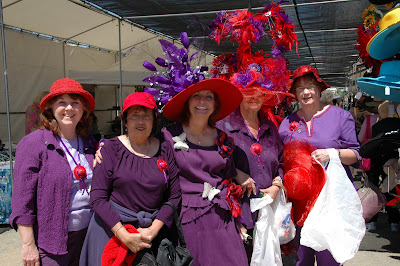Four of us traveled around Morocco looking for the World Heritage sites before heading up to Rabat to take part in a symposium on African development -- Hisako, my longtime friend and traveling buddy, Tetsu, her newly retired husband who walked across England with us last year, and my daughter, Jennifer, finally breaking free from Missoula to travel the world.
More than the World Heritage sites, we found the treasure of Morocco in its people. These guys have been around from early Earth times, using stone tools at least 250,000 years before the Europeans. The Phoenicians, Romans, Arabs, Portuguese, Spanish, Germans, and French have come and gone, contributing genes along the way but the backbone of the country are the Berbers, an ancient mix of Oriental, Saharan and European origins, tribes of nomads, settled farmers, and hunter/horsemen.
Our Lonely Planet guidebook described the Berbers as "live free or die trying". Their history has clearly shaped their personality and outlook and we tried to take on some of their attributes, or at least to be adaptable to them.
Not wanting to lose our lives in Morocco, we hired a driver for the ten days of traveling around the country. Hashem, a young, handsome half Berber man, was given to us as English speaking. He spoke Berber, Arab, and French but his English -- well, not a lot. Jennifer's high school French and a dictionary became our main way of communicating. We learned about Moroccan navigation - what we came to call Moroccan GPS. Each day we gave a list of where we wanted to go, he headed in the general direction and periodically stopped to ask people on the road for further directions. We tried giving him a map and addresses but, after watching how complete strangers responded pleasantly, even with interest, we came to understand these interactions were a way of socialization and connecting with each other.

Driving toward Marrakesh, Hashem indicated we needed to stop to get some "gazwhal". Gazwhal? What was Gazwhal? When finally we pulled into a filling station with a sign "GASOIL", one of us figured it out. Gazwhal -- the French pronuciation for GasOil, as in "we" for "oui". We're still laughing about that one.
One of my photos goals for the travels was to include people somewhere in the picture, not an easy task when many of them didn't want their picture taken.
I got a lot of pictures of backs...

an unexpected candid in Fes...

a conversation taken from a distance in Meknes...

a street nap in El Jedida.

In Marrakesh, Jennifer took a picture of a woman selling baskets from a bit of a distance. The woman jumped up and approached Jennifer demanding dirham (Moroccan money). I came into the picture not fully understanding what was going on between the two, dropped 5 dirham in the woman's hand to end the dispute when Jennifer explained she had been trying to show the woman she had erased the picture from the camera. With this, I reached into the woman's hand to take back the money as she clamped her hand closed. A "tussle" ensued -- Jennifer says a fight -- until I felt the woman's teeth start to close down on my arm. The woman triumphantly returned to her baskets and gave me one of these -

I learned later from a Berber this is a gesture that means "God willing" but from this lady it had, well, one of those "up yours" feel.
We saw amazing skills, like this lady that could belly dance with a platter of candles balanced on her head...

and waiters who could pour tea from several feet above the tea glass.

At the edge of the ancient Roman ruins of Volubilis I watched this man intent on writing, oblivious to those on the way to the ruins.

Such a spirit in the man with his cat in Rabat...

and these camel herders on the way to Er Rachidia.

Jennifer was a lightening rod for the younger ones at Jemaa el-Fna...

In El Jedida, I met Simo, a Tuareg selling carpets from his village in another part of Morocco. The “blue people” of the Tuaregs wear clothes colored by pounding indigo stones into power and the powder into the fabric and, as Simo explained, rub indigo onto their faces for protection from the sun in the Sahara.

About the legendary blue men of the desert, our guide book said "tough doesn't do them justice...they lived on camels' meat and milk instead of bread and wore wool in the scorching desert".

Simo attempted to teach me the art of bargaining. "Just give me your best price and I'll pay it". "But", he explained, "if you won't bargain with me, it means you don't love me".

I met another Tuareg at Ait Benhadeau, who owned 65 camels and taught me the gesture for "Inshallah", or "God be willing".

I didn't buy Simo's carpet, but I did go looking for indigo blue in Fes,

preparing for a return to Morocco, inshallah.
































